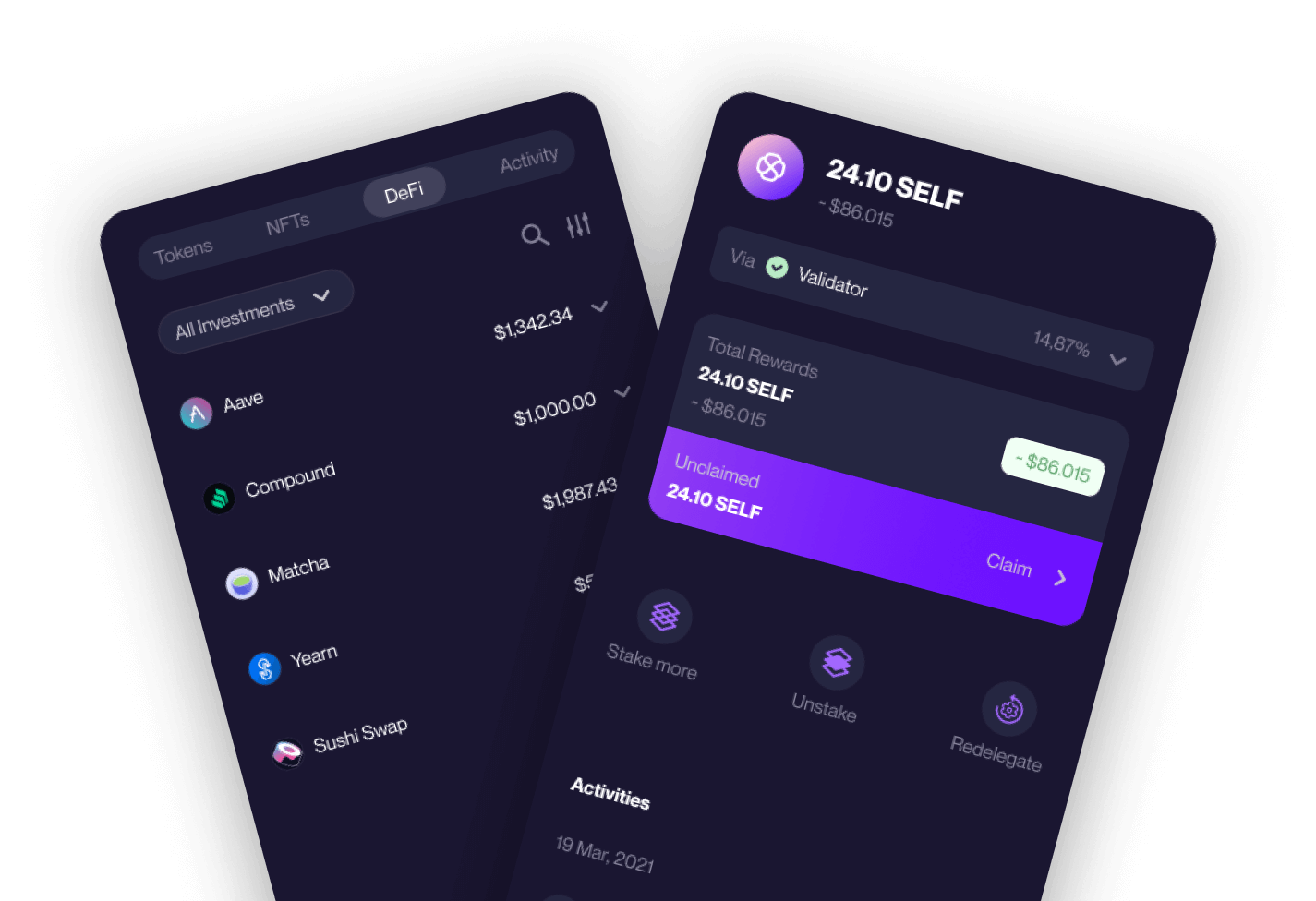
Keyless Wallets
Leave Seed Phrase Weaknesses Behind
Keyless Wallets replace the traditional private key or seed phrases with three independently created mathematical "secret shares". The Personal Share is stored on your mobile device, the Remote Share is encrypted on the Self Chain, and the Recovery Share is sent to users for secure backup.

How Does It Work?
The keyless wallet utilizes the best of the two worlds, namely Multi-Party Computation and Threshold Signature Scheme which are used in different parts of the system.

The main idea behind this technology is the splitting of a random seed phrases into multiple parts.
The initial setup uses a 2-of-3 shares:
This is a share that is securely stored on the user's device.
Is encrypted using the public key of the MPC Nodes network. This is a BLS threshold key that is split via MPC across the nodes that comprise the MPC network. this encrypted share is further stored within a smart module on the Self Chain.
A backup share that is meant to be used in case the user adds a new device or has lost the current device.
Keyless Wallet Creation Process

Keyless Wallet Recovery Process

Self Chain Powered Keyless
Wallet Benefits
Multi-party Computation,
No Seed Phrase Vulnerability
There are several benefits of using MPC technology for wallets, namely not needing to trust third parties, increased data privacy, higher accuracy, removing single points of failure, MPC wallets are harder to hack, and MPC wallets rely less on cold storage.
FAQ
Why are Keyless Wallets more secure than private key or seed phrase wallets?
Keyless wallets work by slipping the traditional private keys or seed phrases into multiple pieces, and then distributing them in multiple places to ensure no one person has full access to the key. So that the private key is always used in a distributed manner, there is no single point of vulnerability. Even if an attacker tries to get access to one of the two shares, they can’t access all of the “secret shares” simultaneously, making your digital assets much safer than in the traditional private key architecture.
What is MPC nodes network?
A network of parties will collectively provide private input to a specific function (digital signing process) and collectively compute the output of that function (digital signature).
What are Self Chain’s roles in building keyless wallet?
At its core, a state machine is a computational model that undergoes transitions between various states based on predefined inputs or events. In the context of the Self Chain, the state machine acts as a control center that orchestrates the intricate dance of data, interactions, and processes involved in Multi-Party Computation (MPC). This technology is at the heart of the Self Chain, responsible for key generation, transaction signing, and security enhancements.
Is MPC new technology?
MPC technology is actually dozens of years old – initial development began in the 1980s – but applying MPC technology to crypto wallets is a relatively recent technological innovation in the last decade. A number of billion-dollar institutions are using MPC technology, including Fireblocks, Coinbase...etc
